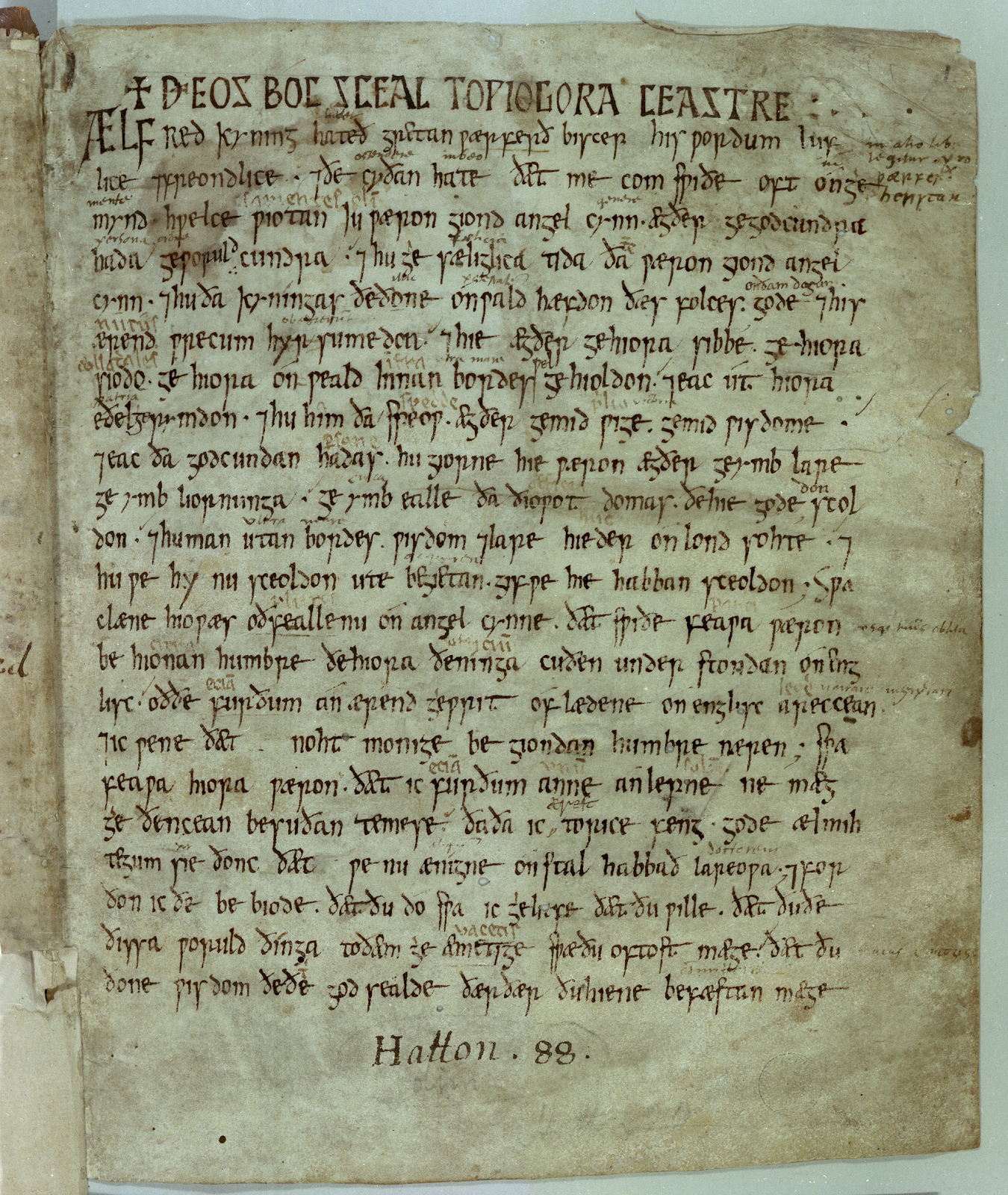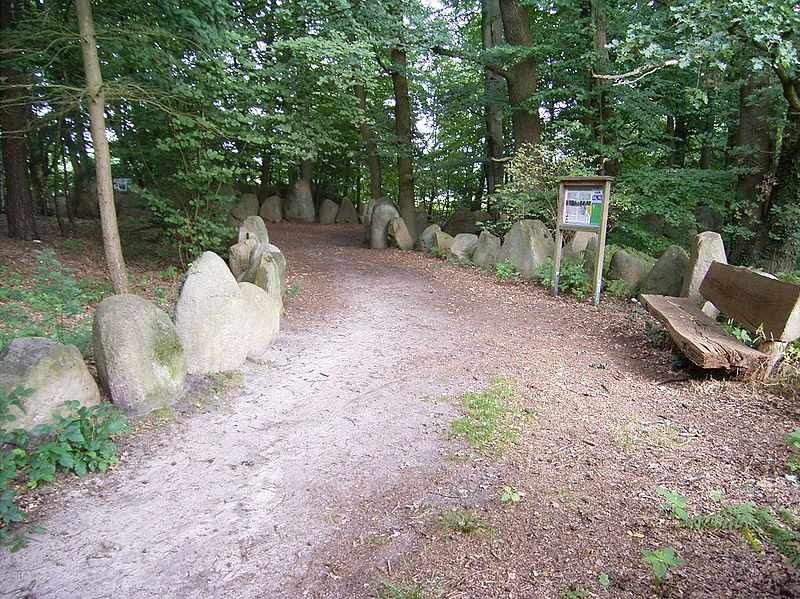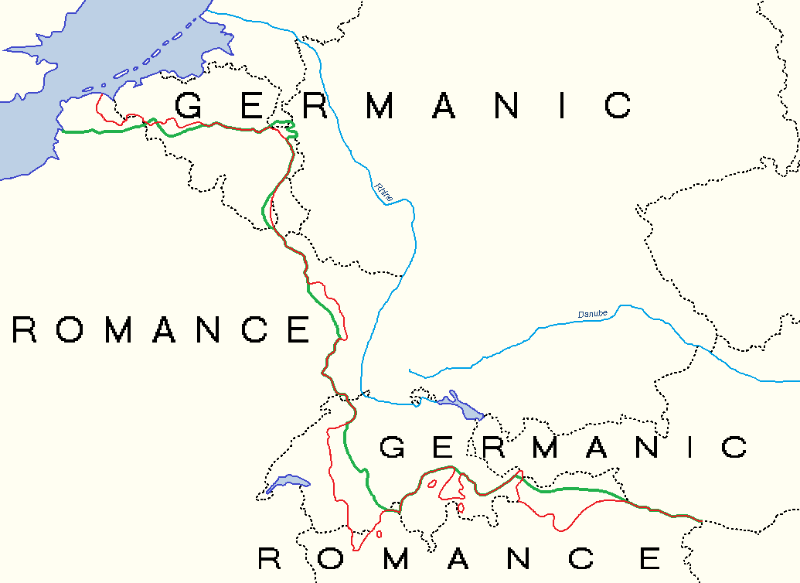- Baptism is absolutely essential to making someone a Christian, and therefore everyone over the age of 1 year old must be baptised or face consequences.
- Christians must fast during Lent, attend Church on Sundays and celebrate Christian holy days by not working or attending any kind of public meeting other than religious services.
- Christians do not make human sacrifices, pray in sacred groves or bodies of water, burn witches or consult fortune-tellers - these superstitions make you a relapsed pagan in need of punishment.
- Christians must be buried in churchyards.
- Christians must live in a parish community and provide for their local priest, including by compulsory payment of the tithe.
Friday 14 April 2023
From the sources 14: conquest, conversion and what it meant to be a Christian in the eighth century
Sunday 2 April 2023
Should history be compulsory to 16?
 |
| Medieval but not European for a change: the world famous examination system of imperial China under the Song Dynasty (960 - 1279) |
So in a previous post, I explored what the History Curriculum for Key Stage 3 (11 - 14 year olds) is like in mainstream UK schools. There I argued that despite the way that politicians and the media often caricature it, its a lot broader, diverse and more enriching than just a narrow fixation on Henry VIII and Hitler. That's not to say that history teaching in lower secondary school (what folks across the Pond would call Middle School) does not have its problems, but its not in the state of general decay that a lot of people think it is.
But when we get to the teaching of history at Key Stage 4 (14 - 16 years old), when pupils are being prepared for the standardised exams known as GCSEs that they take at the end of Key Stage 4 when they are 15 - 16, we encounter problems of a different kind. Indeed, I think its here that those who complain about the curriculum being all about sixteenth century England and the Second World War are slightly more justified in their criticisms.
Now I may need to remind my North American and Continental European readers that, highly unusually among first world countries, in the UK any kind of formal study of history stops being compulsory at the age of 14. In England, about 47% of 15 - 16 year olds sit GCSE history exams in June every year. That's still a very large number, indeed significantly larger than was the case 20 years ago, but that still means that GCSE history is a course that less than half of British children take. Thus for a lot of people, including politicians, journalists, academic historians, educationalists and, last but not least, a minority of secondary school history teachers, the biggest problem with GCSE history is that its optional.
Here I must say where I stand on this. I do not support making GCSE history compulsory. This may seem odd for some of you. I am after all an lifelong obsessive enthusiast for the subject, who studied history at GCSE, A Level, undergraduate degree level and master's degree level. I am also a trainee history teacher and a paid-up member of the Historical Association. And to state the obvious, I am writing these words on my very own history blog. So why should I be arguing for something that's surely going against my professional interests? Arguably, in the eyes of some, this would make me a traitor to my subject, worthy of being tarred and feathered.
The reasons why are as follows. The first is that we all need to show a little self-awareness. I am all too aware from teaching children in two mainstream, non-selective schools that most children are not at all like I was when I was their age. The people who are clamouring from the rooftops for history to be compulsory till 16, if not 18, are people like myself and need to realise this. And the fact that most teenagers don't have wide-ranging knowledge and intellectual curiosity for the past can't simply be blamed on the quality of history teaching or that they can drop it at the age of 14.
We've got to remember that factors outside of schools contribute so much too. To go from my own experience, I was reading about historical subjects as wide ranging as Alexander the Great, the Romans, Feudal Japan, the Aztecs and Incas, the British Empire and the World Wars from the age of 8. I obsessively looked at the globe in my room and at books of maps, finding out where everything was and who controlled which countries at any given time. I was also taken to ancient sites, castles, palaces and museums by my parents. Whether my passion for the past is innate, a product of my middle class upbringing or the result of something else entirely I don't know. Though I am pretty sure its not a result of the the history teaching I've received. While I remember it was always very good, from primary school through to degree level, I'd never say it was ever the main reason why I loved the subject. And most of my substantive knowledge of history does not come from formal study of any kind, but from reading for pleasure. Disciplinary knowledge (use of evidence, source analysis, reasoning with historical concepts) has been where good teaching has really made the difference for me. I'm sure many professional historians could say similar. Indeed, there are a few who admit to having found school history boring. This isn't to cast doubt on the ability of good teachers at secondary level to inspire a passion for the past in pupils - after all, that's part of the reason why I'm in the job.
Now this part of the discussion is perhaps completely missing the point. I don't think anyone is arguing for a compulsory history GCSE because we need more historians. Let's not forget that there are proponents of every other non-core subject (geography, music, art, PE, drama etc) who would love to see their numbers bolstered. And if the real aim of the game were to inspire a passion for history among the youth, then surely history GCSE would not need to eb made compulsory anyway?
The reasons why people support compulsory history at GCSE really are twofold:
- It provides invaluable transferrable skills to help the younger generation in the world of further study, work and adult life.
- A more historically-informed public makes for better citizens.
Saturday 11 March 2023
Controversies 2: the problem of early medieval literacy (the basics)
 |
| Early medieval lay literacy in action: Alfred the Great's translation of Gregory the Great's pastoral care |
Before I finish with this post, we need to consider two things. Firstly, whether or not learning Latin was a barrier to literacy in the early middle ages. Secondly, whether it ever makes sense to speak of early medieval societies as oral cultures.
Tuesday 14 February 2023
From the sources 13: Happy Valentines in Old French and Old High German
Happy Valentine’s Day everyone. Now I’m not going to write a
post about the history of Valentine’s Day itself, though I’d like to say that yes
it does have a medieval history but later than the kind of medieval I write
about here. A lot of very significant historical events happened on this day: the
Abbasid Revolution in Iraq in 748, the Papal Schism of 1130, the coronation of
Akbar as the ruler of the Mughal Empire in 1556, Captain Cook being killed by
Natives in Hawaii in 1779, Ruhollah Khomeini issuing a Fatwa against Salman
Rushdie in 1989 and the launching of YouTube in 2005, to name just six. But of
course, this blog bearing the name that it does, we’re going to be focusing on
an event in Carolingian history that happened on 14th February, in
the year 842 no less.
Ninth Century Frankish cavalry in the Golden Psalter of St Gall, nicely sets the tone for this
842 of course was in the middle of the Carolingian civil war
of 840 – 843, between the three sons of Emperor Louis the Pious. I’ve talked
about this a fair few times before, but at the root of it were the same forces that
meant that ninth century Carolingians could not have nice things – the failure
to equitably share power among the dynasty’s members, aristocratic factionalism
at court and opportunistic foreign powers (above all, the Vikings) deciding to get
involved. Lothar was trying to hold the empire together with his nephew Pippin
of Aquitaine, while his younger brothers Louis and Charles thought they deserved
their own piece of the pie.
By this point, it seemed like the civil war wasn’t going
great for Lothar, as in June 841 he and Pippin had suffered a catastrophic
defeat at Fontenoy. The next 8 months of the civil war saw very little actual
fighting. Instead, the rival Carolingian kings sent envoys between each other,
trying to negotiate a peace. They try and win over supporters from amongst the
Frankish nobles who were either trying to stay neutral, or were on the opposing
side. Meanwhile, opposing armies marched around the countryside of Northern France
and the Benelux countries, garrisoning citadels here, forcing enemy strongholds
to surrender there, blocking off routes where the enemy might approach
elsewhere, and so on. Contrary to what some people might think, battles weren’t
all important in ninth century warfare and were often indecisive. Indeed, its
revealing how our sources tell us so much about the campaigning side of
Carolingian warfare, yet provide us with barely any description of how the
battles were fought, instead focusing on their aftermath and consequences.
And there are a lot of sources for this section of
Carolingian history. Indeed, the 35-year period 828 to 863 is quite possibly
the best documented generation in Western political history between the fall of
the Roman Republic (66 – 31 BC let’s say) and the age of Richard the Lionheart,
John Lackland, Philip Augustus and Pope Innocent III (1188 – 1223). We know so
much about the intricacies of Carolingian politics at this time, and the full
range of partisan perspectives.
One of these sources is the historian Nithard (795 – 844).
Nithard is a very interesting chap, indeed quite a remarkable one. He was the illegitimate
son of Bertha, the third daughter of Charlemagne, and the court poet Angilbert.
I don’t want to go too much into this now, but Charlemagne seems to have
allowed his daughters an unusual degree of sexual freedom, which their brother
Louis the Pious thoroughly disapproved of. The emperor’s sisters were among the
first to be targeted in his attempt to “drain the swamp” at Aachen. Nithard
seems to have been educated at Charlemagne’s palace school at Aachen and thus
was thoroughly literate, proficient in the Latin language and very knowledgeable
of the ancient Roman Classics, especially the works of the historian Sallust
and the poet Lucan (both of whom wrote about civil war). He had of course also
learned how to ride, hunt, fight with weapons and conduct himself around court.
Indeed, one might say his education was fairly typical of a high-ranking
Carolingian aristocrat. Before the civil war, Nithard had been a courtier,
soldier and lay abbot of Saint Riquier.
Thus Nithard’s Histories provide us, along with the
works of Einhard, Angilbert, Eberhard of Friuli and Dhuoda, with valuable
insights into the attitudes of lay aristocrats in the Carolingian Empire and how
they saw the workings of politics. Nithard wrote his history as the events themselves
unfolded, and like Xenophon, Julius Caesar and Ammianus Marcellinus before him,
he wrote as a soldier and politician with first hand experience of it all. Of
course, as your average 16-year-old in a GCSE exam might say, crudely, that means
he’s “biased” – Nithard fought for Charles the Bald and portrays his king in a
positive light, and the enemy Lothar in a very negative one. Above all, he saw
the civil war as a tragedy tearing the Carolingian state (res publica in
the original Latin) apart and highly damaging to the welfare of the Frankish people,
yet kept faith that everything that unfolded was God’s judgement. Let us see
what he has to say about what went down on 14th February 842.
On the fourteenth of February Louis and Charles met in
the city which was once called Argentaria but is now commonly called
Strasbourg. There they swore the oaths recorded below; Louis in the Romance
language and Charles in the German. Before the oath one addressed the assembled
people in German and the other in Romance. Louis being the elder, spoke first …
The basic sum of what Charles and Louis says next is thus: Lothar
is an absolute rotter, and the civil war is all his fault. We’ve tried to offer
peace on the most reasonable terms, yet he refuses. But at least us two look
out for each other as siblings, so we’re going to swear these oaths to show you
what good loyal bros we are, and that we’ll work together to heal the body politic.
Nithard then records the oath Louis swore in front of
Charles the Bald’s soldiers in Romance thus:
Pro Deo amur et pro Christian poblo et nostro commun
salvament, d’ist di in avant, in quant Deus savir et podir me dunat, si
salvarai eo cist meon fradre Karlo et in aiudha et in cadhuna cosa, si cum om
per dreit son fradra salva dift, in o quid il mi atresi fazet et ab Ludher nul
plaid numquam prindrai, qui, meon vol, cist meon fradre Karle in damno sit.
The English translation goes thus:
For the love of God and our Christian people’s salvation
and our own, from this day on, as far as God grants knowledge and power to me,
I shall treat my brother with regard to aid and everything else a man should
rightfully treat his brother, on condition that he do the same to me. And I
shall not enter into any dealings with Lothar which might with my consent
injure this my brother Charles.
Charles then swore the same oath to Louis’ troops in Old High
German:
In Godes minna ind in thes christianes folches ind unser
bedhero gehaltnissi, fon thesemo dage frammordes, fram so mir Got geuuizci indi
mahd furgibit, so haldih thesan minan bruodher, soso man mit rehtu sinan bruher
scal, in thiu thaz er mig so sama duo, indi mit Ludheren in nohheiniu thing ne
gegango, the minan, uuillon, imo ce scadhen uuerdhen.
Then Charles’ soldiers swore this oath in their own Romance language:
Si Lodhuuigs sagrament que son fradre Karlo jurat
conservat et Karlus, meos sendra, de suo part non l’ostantit, si returnar non l’int
pois, ne io ne neuls cui eo returnar int pois, nulla aiudha contra Lodhuuuig
nun li iu er.
Which in English is:
If Louis swore the oath which he swore to his brother
Charles, and my Lord Charles does not keep it on his part, and if I am unable
to restrain him, I shall not give him any aid against Louis nor will anyone
whom I can keep from doing so.
Louis’ troops then did so in their own language:
Oba Karl then eid then er sinemo bruodher Ludhuuuige
gesuor geleistit, indi Ludhuuuig, min herro, then er imo gesuor forbrihchit, ob
ih inan es iruuenden ne mag, noh ih noh thero nonhhein, then ih es irruenden
mag, uuidhar Karle imo ce follusti ne uuirdhit.
In English:
If Charles swore the oath which he swore to his brother Louis,
and my Lord Louis does not keep it on his part, and if I am unable to restrain
him, I shall not give him any aid against Charles nor will anyone whom I can
keep from doing so.
The oaths as they appear in Nithard's histories
Besides political significance, what makes the oaths so
interesting is from the standpoint of written language. Here we are dealing
with some of the very earliest examples of written Continental European
vernaculars. In the case of what Nithard calls the “Roman” or “Romance”
language, which is very clearly Old French, the Oaths of Strasbourg as recorded
by Nithard are the very first text ever to have been written in that or any
other Romance language. In the case of Old High German, a few texts had been
written earlier in the Carolingian period, such as the Latin-Old High German
glossary called the Abrogans (c.770), or the Merseburg Charms (the
only surviving pre-Christian Germanic religious text). The oaths thus offer us lots
of insight into what these languages were like at this point in time, and how
they would later evolve.
As I’m not a philologist, I’ll keep the discussion of linguistics
brief. For the Old French you can very clearly see the languages’ Latin roots.
Some words are still in their Latin forms i.e. Deus (God), jurat (he
swore – historic present), conservat (he keeps), numquam (never)
and nulla (not any). But there’s clearly a lot of evolution i.e., amor
(love) in Latin has moved closer to the French amour with amur; avant
is recognisably the French word for before, as opposed to the Latin ante; and
sendra, soon to evolve into the Modern French seigneur (lord). auxilia
has evolved into aiudha, which is actually closer in spelling and
pronounciation to the Spanish than the French word for help; likewise, podir,
which has evolved from the Latin potere is cloiser to the Spanish poder
than the French pouvoir. The verb tenses also appear to be closer to
French i.e., for the conditional/ future words like salvarai and prindrai
have endings recognisably like how they would be in Modern French.
For the Old High German, I really can’t claim much expertise
– one term in year 7 is the only time I’ve ever formally studied any German, which
I know is problematic given how much important Carolingianist scholarship is written
in German. Still, you can see recognisable forms of German words in this text
i.e., folches (clearly related to volk – people), bruodher
(clearly related to bruder – brother), herro (clearly related to herr
– lord or master), dage (clearly related to tag – day) and Got
(God). And uuillon is clearly related to willa in Old English and
will in modern German and English.
Thus, the Oaths of Strasbourg are a moment of huge
historical significance in the history of Western European languages. Indeed,
from the Romance side of things, it basically marks the terminus ante quem
for when the Vulgar Latin dialects spoken in Gaul evolved into Old French –
when exactly one became the other is highly debated, but it was certainly before
842. Other Romance languages appear fully in written documents slightly later –
Italian is the next to come, in the 960s, followed by Spanish and Portuguese;
Romanian is the last, first appearing in 1521 (in Cyrillic letters, no less).
What was the attitude of the Carolingians to vernacular
languages. Well, its safe to say that in order to successfully navigate high
society in the ninth century Carolingian Empire, you had to be trilingual. Louis
the Pious had his sons Lothar, Pippin, Louis and Charles educated in Latin, Old
French and Old High German, of which the Oaths of Strasbourg are themselves
evidence, and pretty much all of the high nobility (the reiksaristokratie)
would have been educated the same, especially since many of them like Eberhard
of Friuli owned lots of estates in both Romance and Germanic speaking areas.
How much bilingualism, let alone trilingualism, spread down the social
hierarchy is much less certain. Charles and Louis’ soldiers, who we can
reasonably assume to have been drawn from amongst the middling landowners and
well-to-do free peasants, could only speak their native vernaculars, and so
said their oaths in them, unlike Charles and Louis who said their oaths in German
and Old French respectively so the other side’s troops would understand. At the
Council of Tours in 813, Charlemagne decreed that priests, depending on where
they were, should preach either in the Lingua Romana (Old French) or Theodisc
(Old High German) so the common folk could understand.
A ninetenth century artist imagines the scene of the Oaths of Strasbourg
As written vernaculars go, we have only one other example of
written Old French from the Carolingian era, a short late-ninth century poem on
the martyrdom of Saint Eulalia. After that, the next examples of written Old
French appear in the twelfth century with the birth of the chansons de geste
and other early chivalric fiction. For Old High German, there’s quite a bit
more from the Carolingian period. For example, the monk Otfrid of Wissembourg
(a monastery now in Alsace, France) produced the Evangelienbuch, an Old
High German verse translation of the Gospels, for King Louis of East Francia.
There are also some poems like Muspilli (a poem about Hell), the Hildebrandslied
(a fragmentary epic), the Georgslied (about St George) and the Ludwigslied
(about a Frankish victory over the Vikings). Still, the amount of Old High
German literature that survives pales in comparison to the amount of Old English
literature surviving from 685 to c.1100. Yet when you factor in the surviving
Latin literature, far more poems, treatises and histories survive from Carolingian
Francia in the ninth century than from the whole Anglo-Saxon period. Its
because they’ve got an unusually high proportion of vernacular texts, that
Anglo-Saxonists (or as some would now prefer to be called, Early MedievalEnglishists) are able to justify obsessively fixating on so few texts, to thepoint that Beowulf and the Battle of Maldon have been sucked dry and done todeath. Meanwhile, a great deal of medieval Germanist scholarship focuses on reconstructinghypothetical texts that may have never existed, rather than the Old High German
texts that are actually there. The Carolingians, however, had different priorities
to us and preferred Latin literature by far.
Why this book needs to be written part 1
Reason One: the Carolingian achievement is a compelling historical problem This one needs a little unpacking. Put it simply, in the eighth c...

-
Reason One: the Carolingian achievement is a compelling historical problem This one needs a little unpacking. Put it simply, in the eighth c...
-
I can’t tell you how great it feels to be writing a blogpost now. The last two weeks have been absolutely hectic for me with the PGCE and ...
-
I am back!!! After almost two months of inactivity (54 days to be precise), the longest in the history of this blog, I am now active agai...

















